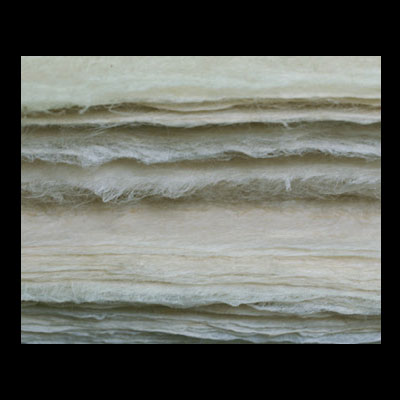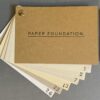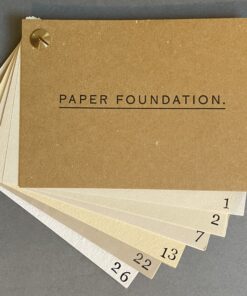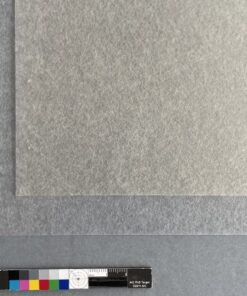Use in conservation: linings, paper repairs, leather repairs etc.
Series 1 – We Bal formation: Yin and Yang, two layers are in one sheet. Stronger paper compared to general mulberry papers. It maintains an even expansion and contraction rate. No dominant grain direction. It is strong on all sides. Dimensionally stable against moisture. It retains its original size when dried after being wet. Color variation from washing and sun bleaching can occur.
Series 2 – no chain line: specially developed at conservator’s request. No chain line and very smooth surface. Excellent for lining. A full range of thicknesses up to 45 g/m2. Color variation from washing and sun bleaching can occur.
Series 3 – basic selection: generally used mulberry paper collection. Excellent for all purpose conservation work. Color variation from washing and sun bleaching can occur.
All Hanji papers are handmade from 100% Korean mulberry paper called Cham Dak. Korean Cham Dak fibers are long and flexible; and are known for their incredible strength and longevity. Hanji papers are made only from the finest non-bleach white inner layer, Baek Dak, and are naturally pH-neutral.
All papers are made with natural formation aid Hwang Chok Kyu, derived from the roots of the hibiscus. The tacky solution from this root keeps long mulberry fibers suspended in the vat and prevents them from tangling. It also allows the fibers to flow freely and evenly across the screen in the formation process and helps to separate the wet sheets from the stack later.
More Info
“Silk lasts for five hundred years and Hanji lasts a thousand years.”
Hanji papers are made by two distinctive formation techniques: Webal and Ssangbal. Webal (Heul Lim Tteu Gi) is a traditional formation technique. The papermaker holds two front corners and starts with a fast dip towards him, and then tilts the mould to discharge the water off the opposite end from him. He then starts a multiple set of dynamic side to side movements until a desired thickness is formed across the screen. Papers formed by this technique generally have two layers, Yin and Yang, in one sheet. This is true for even the thinnest Yin Yang Ji. These papers have no dominant grain direction and retain the original size after being wet and dried. They are great for projects requiring dimensional stability.
Ssangbal (Ga Deum Tteu Gi) formation technique is generally known as a Japanese technique. The papermaker holds two handles and starts with a dip towards him, and then gently moves the mould left and right until a desired thickness is formed across the screen. Excess water is then discharged off the opposite end from him. This technique typically yields a sheet with a grain direction. These papers are recommended for projects that require alignments of grain direction.
Further information and full test results from the Library of Congress: Minah Song and Jesse Munn: Permanence, Durability and Unique Property of Hanji, http://ifides.com/images/LOCHanjiTest.pdf.
Related products
Uncategorized




